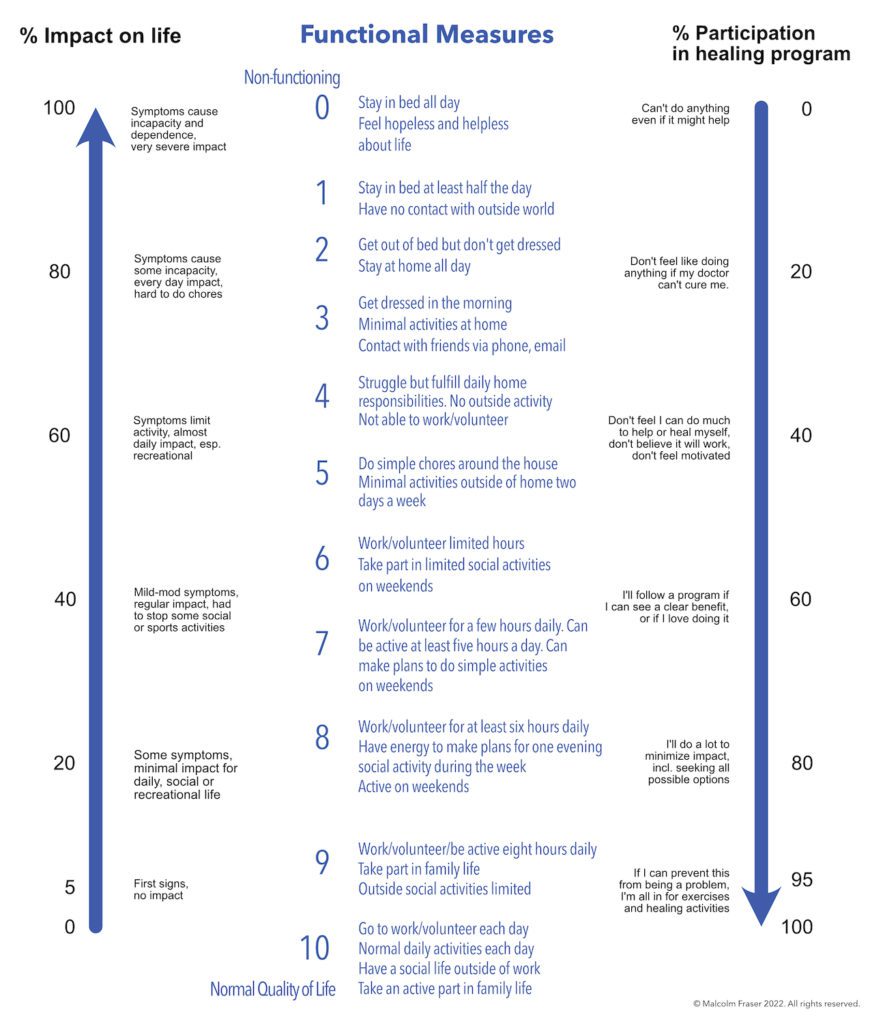In Choosing What Works, I mentioned what makes for a successful healing program, especially how important it is to listen to the client.
As people, we only tend to face problems when they get bad enough.
As the symptoms improve, we stop any exercises when we get comfortable enough with what remains.
There are basic coaching questions like “What do you want? What would ‘healthy’ be like for you? What would you like to experience? How would your life be better? What is your dream of health?”
Coaches often then ask some variant of: “On a scale of 1-100, how important is it to you to achieve your goals?” They feel there’s no point in accepting any prospect who gives an answer of less than 90. They want to know someone is committed to the best possible outcome.
Then: “What are you prepared to do, the smallest step where you know you cannot fail?
Have a look at this chart.

Luke Chan, in 101 Miracles of Natural Healing, reports the following story about Zhineng Qigong in China. People would often go to the Huabai center to learn Zhineng Qigong, return to their villages, and teach their neighbors. One such man had been teaching for a while, then one winter’s day, looked out of his window, and saw it was snowing heavily. He decided none of his regular participants would show up for the day’s session, so he needn’t bother to go to the open space in the village.
After a while, however, he decided that he should go and check. As he approached the square, he saw a lady doing the form by herself even in several inches of snow. Getting closer, he realized he didn’t recognize her. So he went over, introduced himself, and asked how she’d learned the form.
She replied that she lived in a house on the edge of the square. When his group had started the Qigong practice, she had watched them, but being bedridden, was only able to visualize herself doing the movements the group were performing physically.
Gradually she was able to move her arms, then sit up, and as she got stronger, stand up and do all the movements. That particular day was the first day she was strong enough to come out and join the group, so she “wasn’t going to let a little bit of snow stop her!”
The great psychiatrist and father of modern hypnotherapy, Milton Erickson, reported that in his recovery from his first bout of polio, he had learned to walk again by watching how other people moved. I once met a guy from a small town in Missouri who was barely able to walk after back injury. In the same way as Erickson, he would go on to his local Main Street, watch someone walking, then follow them, copying their movements.
People are capable of heroic persistence when required. One lady realized that almost her favorite saying was: “I don’t really want to, but I suppose I’d better.”
Sometimes it’s crucial just to take the next step, and the next step after that, and then keep going.
© Malcolm Fraser 2022. All rights reserved.




